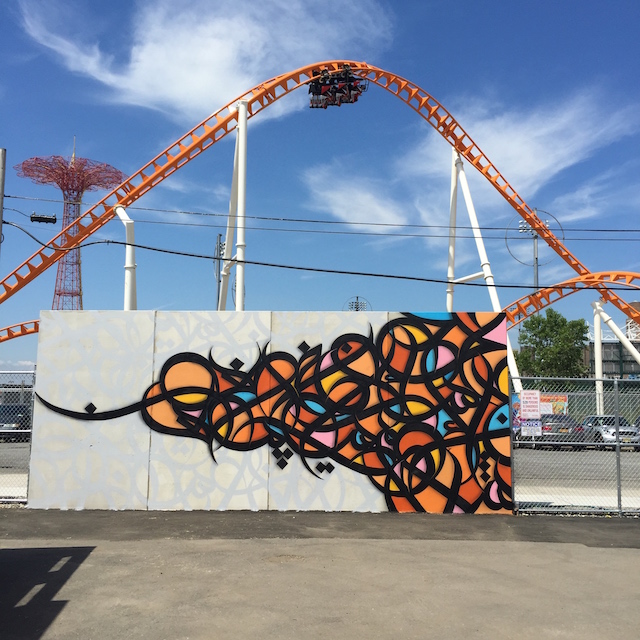
Last Sunday, I visited Coney Island for the first time. I was there to see The Coney Island Art Walls, Jeffrey Deitch‘s latest mural project. Deitch is a master of fun, and he has a habit of causing controversy. The Coney Island Art Walls are no exception. The murals are a great addition to Coney Island’s myriad of attractions, but artnet in particular has been treating Deitch like their personal punching bag, in large part because of the project’s ties to Joseph J. Sitt of Thor Equities, a real estate developer whose company owns the lot where the murals are being installed.
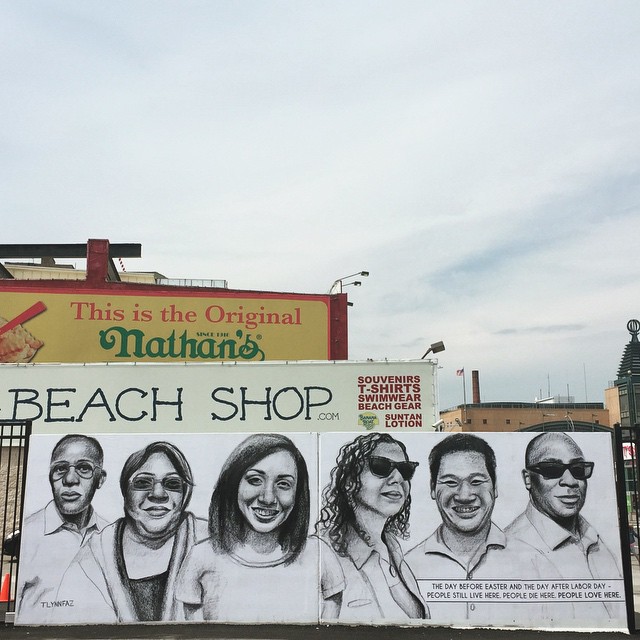
People were mad at Sitt for attempting to destroy the history of Coney Island and leaving lots his lots vacant. Those are completely legitimate concerns. Now, they’re mad that Sitts has put something in one of his lots: A bar, some concession stands, and murals by an amazing array of artists, many of which explicitly celebrate the history of Coney Island. Or rather, it’s arts journalists who are attacking Deitch, on the basis of those complaints, for helping Sitts DO THE VERY THING THAT PEOPLE WERE CALLING ON HIM TO DO. Their anger makes no sense, unless those journalists are just desperately searching for one more reason to hate on Deitch.
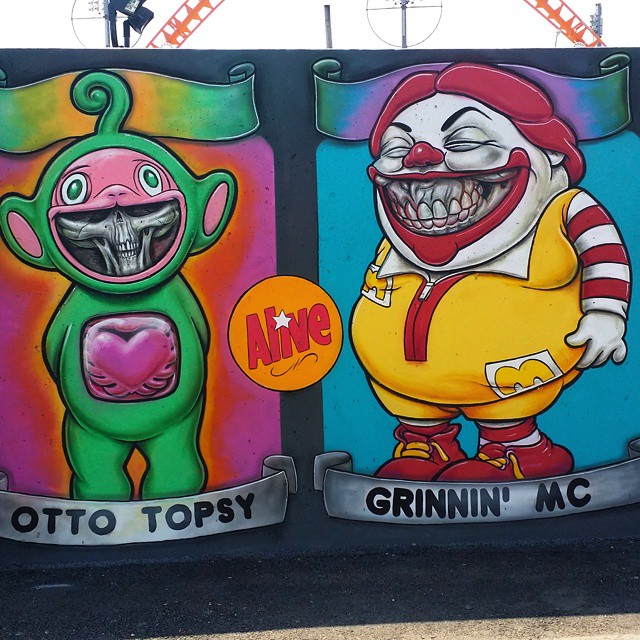
That said, The Coney Island Art Walls are entertaining, which makes the project easy to dismiss as unimportant. But the murals are literally across the street from an amusement park, so of course they’re entertaining! Are the murals tools for gentrification and mindless amusement more than social justice and disrupting the everyday? Probably. And most days I’d prefer to see a piece of illegal street art or graffiti or a “socially engaged” public art project than a wall where the art functions primarily as decoration. Most days, I’d also rather eat a salad than a hot dog. But on that rare occasion when I visit an amusement park, I am there to be amused and I definitely don’t want a salad for lunch.
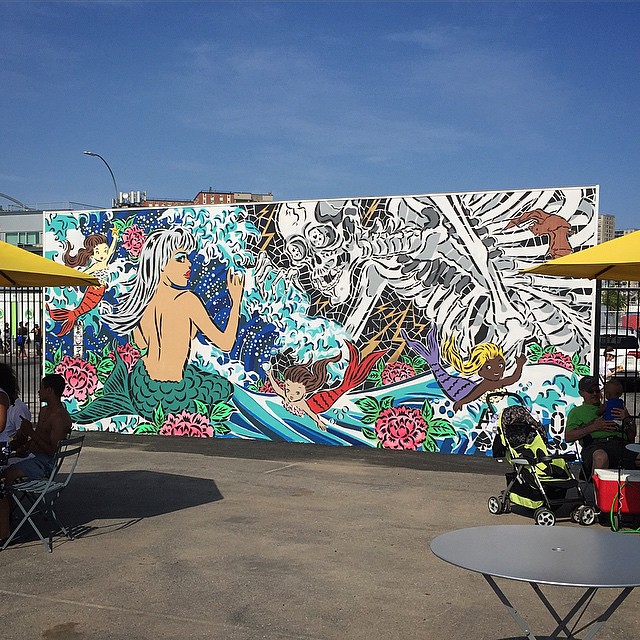
The key to the project’s success really is the setting. These are not murals that you’ll just stumble across randomly. It’s a project that you travel to the end of the subway line to see. It’s its own Coney Island attraction, and a good one at that.
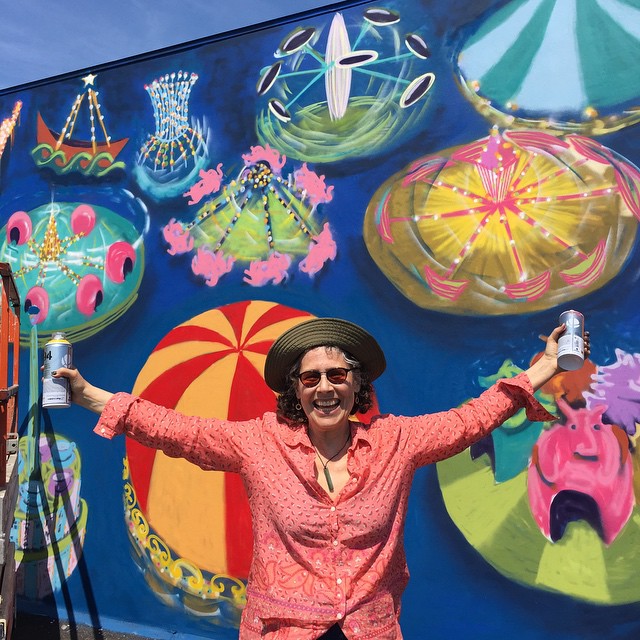
Artnet’s Brian Boucher suggested that organizing murals for Coney Island was a new low for Deitch. That’s such a closed-minded view of what and where art can be. The bulk of the murals celebrate the history of Coney Island or at least fit in perfectly among the area’s existing cacophony of iconic rides, amusements, and signage. Aiko‘s piece looks like it belongs on the side of a carnival game, and Jane Dickson captured spirit of wonder in the air. I’m not sure I’d enjoy AVAF’s mural if I had to live across the street from it and see it every day, but it’s fantastic as a contemporary take on an crazy Coney Island signage. The Coney Island Art Walls are an opportunity to install a series of murals that wouldn’t make sense anywhere else.
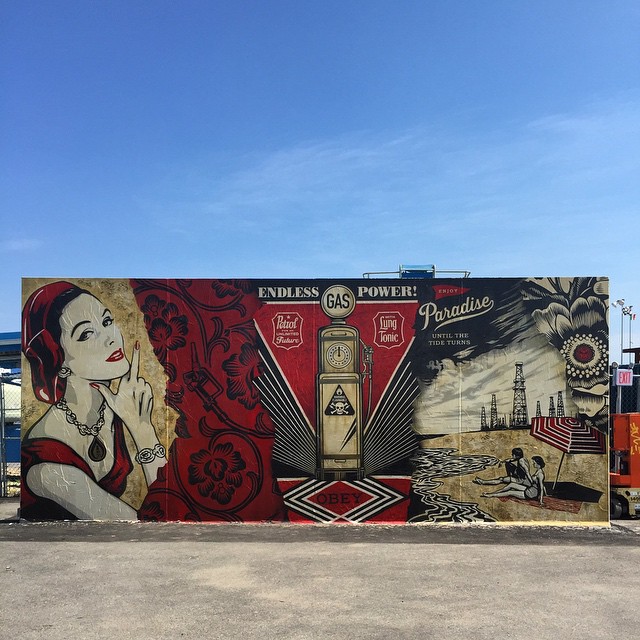
Artnet’s Christian Viveros-Fauné was also flat wrong when he dismissed the project for its “Uniformly colorful murals that individually deploy some of street art’s standard motifs—bright hues, stencils, and graphic punch—but engage in neither activism nor neighborhood politics.” Amongst the color and revelry, there is in fact some politically-charged worked: Shepard Fairey‘s fitting tribute to classic seaside advertising features a call for environmental responsibility, Mr. Cartoon‘s painted a young person of color being chased by a white police officer while the grim reaper lurks in the background, and Tatyana Fazlalizadeh’s portraits of neighborhood residents are accompanied by this statement: “The day before Easter and the day after Labor Day – People still live here. People die here. People love here.” Politics and activism are far from the focus of the project, but they’re not absent.
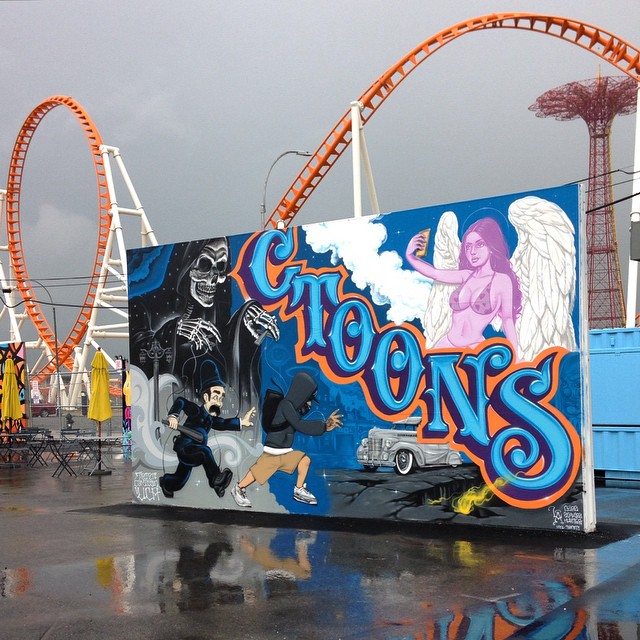
So, go to Coney Island. Check out The Coney Island Art Walls. But go with the right mindset. It’s an attraction to be enjoyed. Take a selfie with Ron English‘s sideshow characters. Snag the perfect photograph of eL Seed‘s mural with a roller coaster in the background. Climb onto Skewville’s oversized boombox and do a little dance. Go home with a smile on your face. It’s good for you.
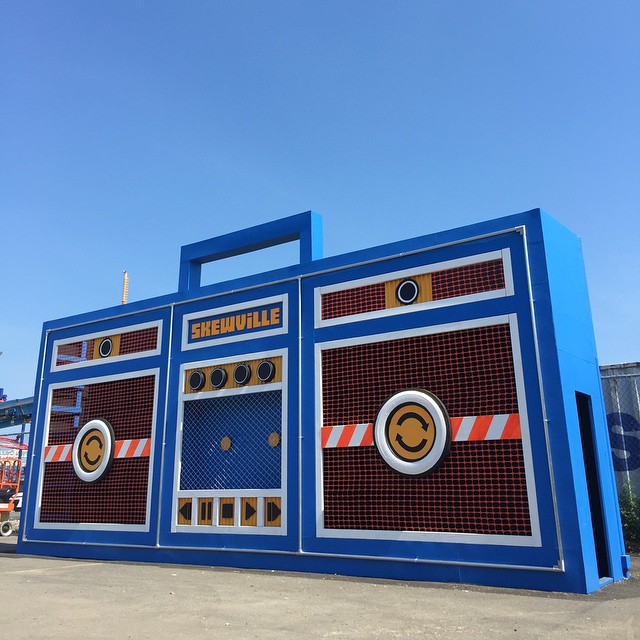
Photos by RJ Rushmore and Martha Cooper, and from the Instagrams of Tatyana Fazlalizadeh and Ron English
